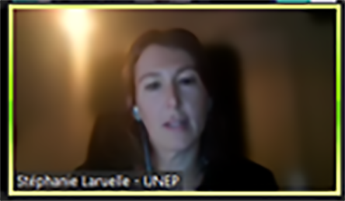Department of Civil and Environmental Engineering organized a webinar on ASGM management technologies
2021-12-13
Department of Civil and Environmental Engineering organized a webinar, along with Japanese Society of Geo-pollution Science, Medical Geology and Urban Geology, on possibly applicable technologies to the tailings released from the artisanal and small-scale gold mining (ASGM).
The webinar was entitled “Geological and Environmental Research Methodologies for ASGM: Present Status of Observation and Monitoring Technology towards Risk Management of Mercury” and was attended by UNEP, National Institute of Advanced Industrial Science and Technology (AIST) and Environmental Research Center, Chiba as well as the said department.
Speaking on the occasion, Ms Stéphanie Laruelle from the Secretariat of UNEP Global Mercury Partnership provided information about the Partnership. She also highlighted the importance of reliable data and new technologies to monitor the environment around the ASGM sites.


After her, Prof Ryoji Tanaka presented a cutting-edge technology “RTK” and showed a drone image of a smelter ruin which was depicted using RTK. This technology can be harnessed to capture distribution and volume of the ASGM tailings.
Then Prof Kazuyoshi Yamada talked about sedimentary sciences to assess mercury in ‘‘varve”. A varve is a set of sediment layers which preserves chronical records year by year. It is expected that the varve can be used to monitor the mercury behavior at distance.
Dr Osamu Kazaoka focused on a drilling instrument which can recover cores from unconsolidated sedimentary bodies. This means that using his method we can drill tailings ponds and understand the internal structures.
Dr Kazutoshi Noda shared his experiences to develop smart mercury monitoring system using “Quartz Crystal Microbalance-based Method”. His product is compact, light and cheap. It will be an effective tool to monitor the work environment where they use mercury.
In conclusion an important takeaway of the webinar was the significance of geological methods to draw pictures of what ASGM communities are doing. Also the webinar helped bring together people from different institutions to share a platform for furthering discussion on the tailings management to prevent the disaster and environmental degradation.
Opening remarks by Stéphanie Laruelle
(Department of Civil and Environmental Engineering)